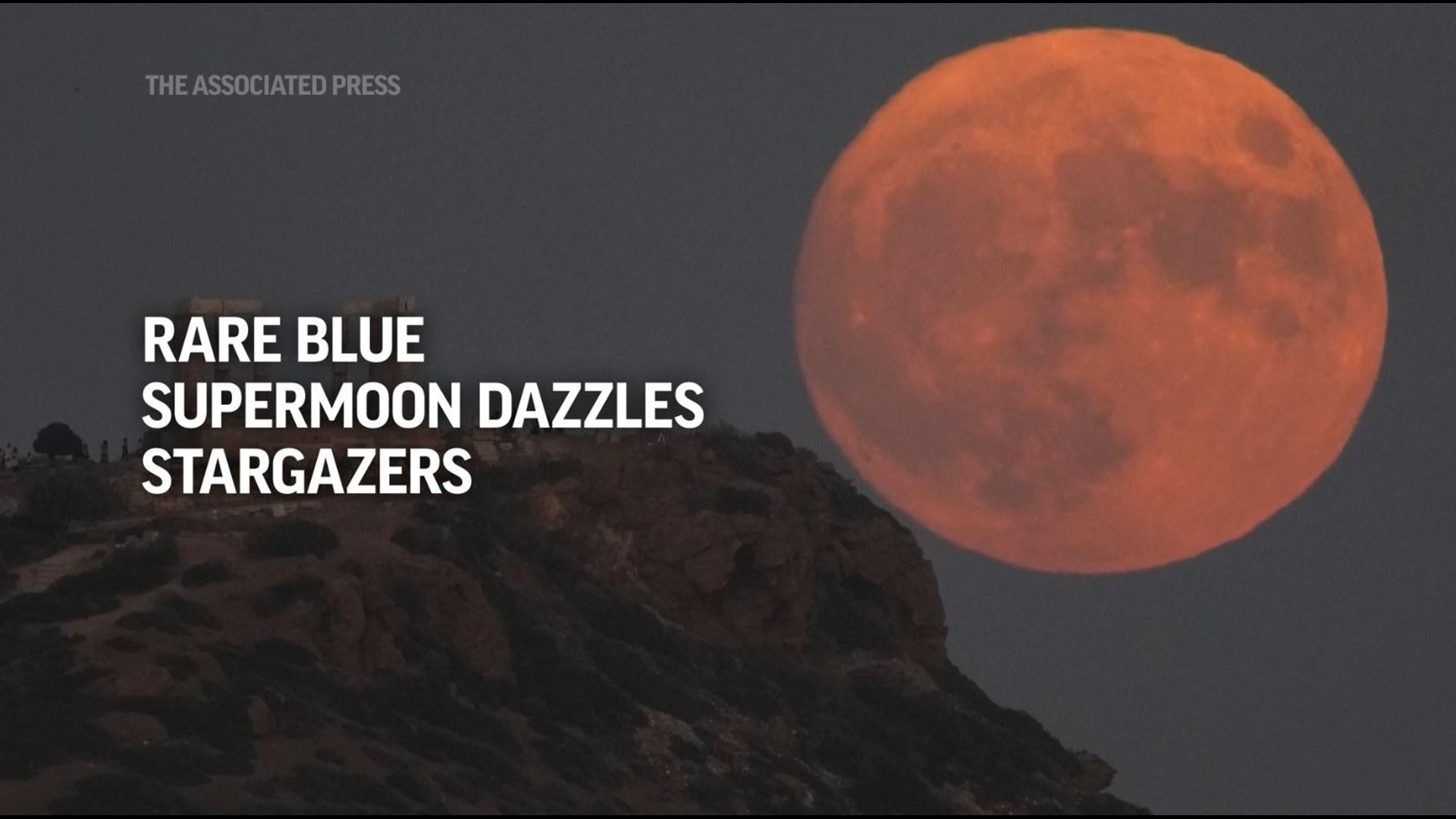WASHINGTON — The last supermoon of 2023, which also happens to be the harvest moon, will appear in the night sky next week to mark the end of summer and the beginning of the last three months of the year.
On Friday, Sept. 29, the moon will be closer than usual to the earth, making it appear bigger and brighter in the night sky.
Next week's supermoon is the last of four this year, and comes just after a double supermoon in August, which had two occurrences of the rare phenomenon.
So-called supermoons occur because the orbit of the moon around the Earth is not a perfect circle but is instead a flattened circle or an ellipse. This means that during its 27.3-day orbit, there are points at which the moon is closer to the Earth and points at which it is further away.
The full moon for each month is given a unique name. For September, in honor of the reaping of crops, it's the harvest moon.
The harvest moon is one of the most familiar of these names, and refers specifically to the nearest full moon to the autumn equinox (when the sun crosses the equator and day and night are approximately of equal length). This year, the equinox is on Sept. 22.
When is the harvest moon supermoon?
According to NASA, the full moon will be Friday night, Sept. 29, 2023. Because it'll be only a week after the equinox, that full moon is considered the harvest moon. And it will also be the last supermoon until Feb. 9, 2024
What is the harvest moon? Does it actually have to do with crops?
As well as being a fun name, the harvest moon actually does have something to do with farming and crop harvesting.
According to NASA, the term dates back to before electricity, when farmers depended on the moon's natural light to harvest their crops late into the night. The full moon was particularly important at the beginning of fall, when harvests are the largest.
What is a supermoon?
The moon's orbit around the earth is an ellipse, not a perfect circle. A full moon is considered a supermoon when it comes within 90% of perigee, its closest point to Earth.
According to NASA, the closest supermoons appear "about 17 percent bigger and 30 percent brighter" than the furthest, faintest moon of the year. That 17% isn't actually enough to make the moon look noticeably bigger, but NASA says supermoons are still a bit brighter than other full moons.
The perigee is about 226,000 miles from Earth — about 25,000 miles closer than the moon's furthest point.
While it's popularly used to describe the closest full moons, "supermoon" isn't an official astronomical term. In fact, it was coined by an astrologer in 1979.

